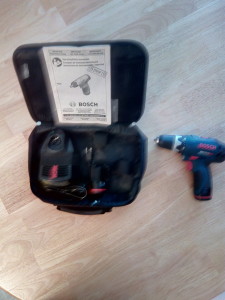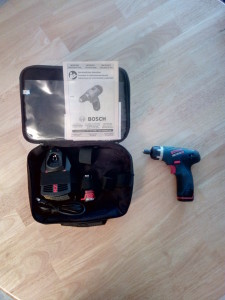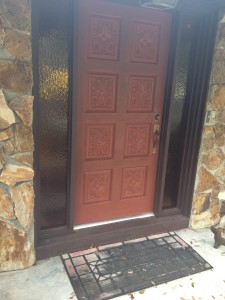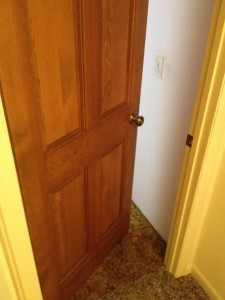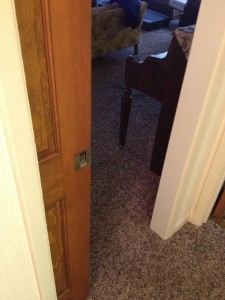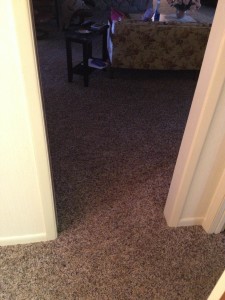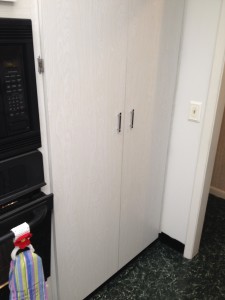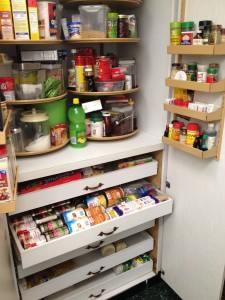I Just Bought a House. Is it Safe? (Part Two)
This is also for those you who are planning ahead.
If you are still in the ‘looking’ stage, and wanting to know what you are going to need after you find your ‘dream’ house, keep reading.
Usually, the first things new owners do is unpack and get ready for a house-warming party.
While these are important things to get done, they should fall a little farther down the list of importance.
First, you need to make sure that you, your family, pets, guests, and belongings are going to be safe and secure. That is what we are going to cover in this two-part series.
There are different kinds of safety that should be addressed before you spend your first night in your new home. This post will deal with the second type of safety.
A clean house is a healthy house. A healthy house is a safe house. Soooo…
The Second Kind of ‘Safety’ is to
Make My House Healthy.
After you’ve bought a house,these are the Top Six areas to hit first.
The Bathroom
The toilet seats should be replaced immediately. ‘My’ policy is to replace them even if it is a brand new house. At the very least, I KNOW some of the workers have used them. While I am certainly not in the majority about going this far, but I have found no one who argues against changing them on an existing home.
If there is a shower curtain, it should be replaced, regardless of how ‘clean/new’ it looks.
If the bathroom has an enclosure, a thorough scrubbing would be in order. While you have the cleanser out, the tub, sink, faucets/ mirror, and medicine cabinet (inside and out) should be given the ‘once-over’.
It would be a good idea to clean all tiles (walls and/or floor) that is showing. A solution of bleach and water can be used in lieu of a manufactured product, if you want.
The Kitchen
The sinks, faucets, and counter tops need to be sanitized. Be sure to use an antibacterial cleaner. It is more important to BE clean, than LOOK clean.
The refrigerator (if in an existing home) should be thoroughly scrubbed with a disinfecting cleaner. Change any and all water filters (whole house/kitchen/refrigerator/etc). If it is a brand new home, the refrigerator can be wiped out with damp cloth dipped in a solution of Dawn (or other such mild degreaser/disinfectant).
The same treatment goes for the stove/oven. If it has a ‘self-cleaning’ function, then it would be a good idea to test it. You will find out if works, how it works, and clean the oven at the same time.
The wall(s) next to the stove burners could use a once-over.
The Heating/Cooling unit
Whether it a brand new home or ‘pre-owned’, you really need to change the filter(s). A brand new home could have fumes and dust from the last days of construction. There is no telling what a pre-owned home has run through the ventilation system.
I recommend that, on a pre-owned home, you remove and clean/replace all of the vent covers.
Then, while the blower (fan) is running, spray some Febreze into the return-air vent. ‘House smells’ can build up in the ducts.
If you have a heat pump unit, find the drain, and make sure it is clear.
The Water
I am going to assume that if your new home is serviced by a well, you had the water tested BEFORE you purchased the house. If not, do it IMMEDIATELY!
If you are unfamiliar with the neighborhood (No friends/family living nearby), then I strongly suggest you talk to your neighbors before drinking water from the tap.
IF there is a filter on the refrigerator and/or kitchen sink, and YOU have installed new cartridges, then it should be OK to drink the water. Even water that comes from the local utility can have chemicals that you do not want (fluoride, calcium, etc).
The Flooring
This only pertains to homes that have carpeting in them. And I mean carpeting anywhere in the house/ porch, or deck.
If you purchased a home that is brand new, a thorough vacuuming will suffice.
If it’s a pre-owned home, you should strongly consider replacing (all) the carpeting. You do not know if previous owners had animals (or were they smokers?). Fleas would be the least of your concerns if you are bringing in a pet and/or infant. There are some illnesses that can live for a long time. Without getting too graphic, are you willing to gamble the health of your child/pet that the carpeting has not been the recipient if any kind of bodily fluid? Babies ‘spit-up’, cat’s hair ball, to name a few.
BTW, wood/laminate flooring can harbor things in the cracks between the boards (**Google this to see if it is a health issue**).
Some laminate flooring is made with compounds derived from formaldehyde which can release fumes that are detrimental to air quality. (http://www.ehow.com/about_6747861_laminate-wood-flooring-toxic_.html)
Misc.
There are also many other things that should be cleaned.
All interior door knobs/levers (including cabinet knobs/handles) should be disinfected, as well as the trim around the door/drawer.
This goes for brand new homes also. Do you know the health status of every person who worked on your home? Were there Realtors with other prospective buyers?
Did you buy a pre-owned home with existing furniture? Furniture should be treated the same as flooring. How safe is it? Have there been smokers/ pets/illness that could have come in contact with the furniture?
List of items that would be useful.
- Rubber gloves (You don’t need strange bacteria under your fingernails, or in an open cut)
- Dust masks ( You do not want to start with a sinus infection, in your new home)
- Safety goggles (I recommend goggles. Stuff can splash around glasses)
- Broom and mop (Throw them away when finished. Buy new ones. The mop, especially, will be near impossible to clean all of the germs from it)
- Two buckets and a lot of rags (Throw the used rags away. The buckets can be cleaned. I recommend rags because you can scrub hard without having them fall apart)
- Cleaning products (disinfectant/degreaser/bleach/etc)
- Cheap, but new vacuum cleaner (If this is an existing home,you can toss it when you are done if necessary)
- Anything else you can think of. My list is certainly not all inclusive. Everyone has their own ideas of ‘clean’. By all means, add to this list as fits your particular situation.
Final note:
Make sure you have plenty of gloves, masks, and goggles/glasses for everyone (extra gloves in case you need a second/third pair).
Do not discount the value of these safety items (masks/goggles/glasses). One errant ‘splash’ could cause a life-changing injury. This whole blog is about making your home a happy place.
These are some of the things that should be worked out before you spend your first night in your new home. If you think ahead, you can be ready for this before you sit down for the ‘closing’ and not waste a single night away from your new home.
If you have already bought a house, go back and check that you covered all these items. While some are not necessarily a ‘first night’ issue, you should not put them off, and take the chance of forgetting.
In short, there are many things that really should be cleaned/replaced before being used.
My Next Article:
How do I change the locks on my doors?
I will be going over the different kinds/brands of locks, as well as installation.
